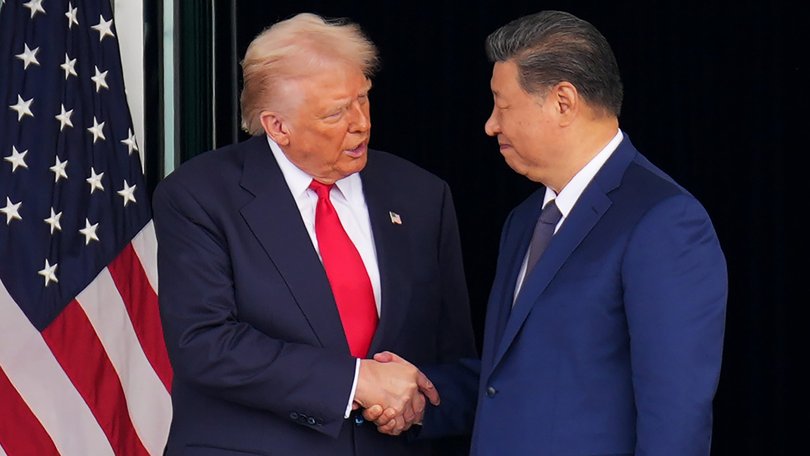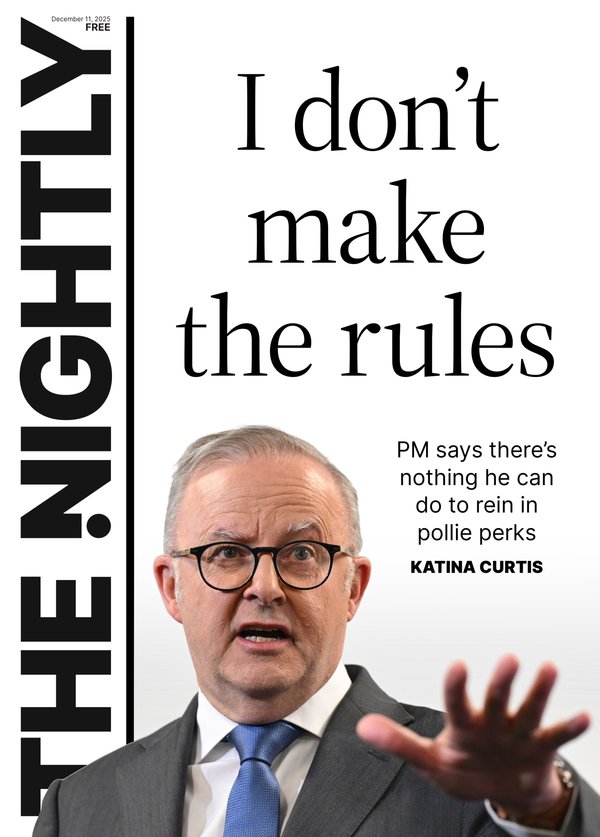Trump threatens to resume nuclear weapons testing, minutes before Xi meeting

In the middle of a high-stakes diplomatic tour of Asia, President Donald Trump threatened on social media to resume nuclear testing for the first time in more than 30 years.
He made the threat just minutes before he was scheduled to meet President Xi Jinping of China, who is overseeing one of the fastest build-ups of a nuclear arsenal on Earth.
“Because of other countries testing programs, I have instructed the Department of War to start testing our Nuclear Weapons on an equal basis,” Mr Trump wrote on Truth Social, his social media site, saying the process would begin immediately.
Sign up to The Nightly's newsletters.
Get the first look at the digital newspaper, curated daily stories and breaking headlines delivered to your inbox.
By continuing you agree to our Terms and Privacy Policy.The words “on an equal basis” may mean he will show off the power of American missiles or undersea nuclear assets, rather than detonate a nuclear weapon. The United States routinely tests unarmed missiles. Mr Trump did not clarify his remarks to reporters while greeting Mr Xi.
While China is rapidly expanding its nuclear stockpile, and deploying missiles in new silos, it has not tested a nuclear weapon since 1996. Russia has not conducted a confirmed test since 1990. And while the United States has never ratified the Comprehensive Nuclear Test Ban Treaty, which bans weapon detonations, past presidents have largely observed its provisions.
It was not clear what prompted the announcement, which Mr Trump appeared to have made while in Marine One, the presidential helicopter, as he was flying to meet Mr Xi. But he may well have been angered by recent tests of exotic nuclear delivery systems by Russia.
In the past few days, President Vladimir Putin said Russia had successfully tested a nuclear-powered and nuclear-capable cruise missile, and separately, a nuclear torpedo called the Poseidon. The torpedo is designed to travel under the Pacific from Russia’s east to hit the American West Coast.
Those systems were known to observers; Mr Putin showed them off during Trump’s first term. It is unclear whether they are fully operational. And Mr Putin’s sabre rattling, in the wake of fizzled plans for a summit meeting with Mr Trump about Ukraine, consisted of tests of the delivery vehicles; he did not detonate any nuclear weapons.
For years, American nuclear weapons engineers have said that more nuclear testing was unnecessary, since they could model tests on a computer rather than risk the kind of detonations that were once set off in the Pacific or underground in Nevada. But in recent years, as the United States has begun to modernize its aging arsenal, there have been calls to resume testing.
Mr Trump said he had authorized the Pentagon — what he now calls the Department of War — to swiftly conduct nuclear tests. But historically, those tests were done by the Energy Department, which designs and builds America’s nuclear weapons.
The President’s statement came about 100 days before the expiration of the last major nuclear arms control treaty between the United States and Russia, called New START. It limits each country to 1,550 deployed strategic weapons, the kind that can cross continents, usually on intercontinental ballistic missiles.
The treaty cannot be extended again. But after meeting Mr Trump in Anchorage, Alaska, in July, Mr Putin suggested that both countries could informally agree to observe the limits on deployed weapons for another year, presumably while they began to discuss a replacement treaty, or some other kind of arrangement to avoid resuming a Cold War-like arms race.
Mr Trump told reporters he thought Mr Putin’s idea was a good one. But that was before he accused the Russian leader of dragging along talks while continuing to attack Ukrainian civilians. There is no indication any talks with the Russians about a successor to the New START treaty have begun. And the tests of new, exotic weapons delivery systems seemed a particular challenge because they are not covered by the treaty’s limits.
China poses a particularly difficult nuclear conundrum for Mr Trump. It has never been a party to nuclear arms limitations treaties; during the Cold War, its “minimum deterrent” of just a few hundred nuclear weapons, compared to the thousands held by Russia and the United States, seemed too small to worry about.
But Mr Xi abandoned that decades-long policy, first secretly, then publicly as China created new missile silos in plain view of US spy satellites. The Pentagon estimates it will have 1,000 or so deployed weapons in 2030, and 1,500 in 2035. That would put it on par with the current deployed arsenals wielded by Washington and Moscow.
Until it reaches rough parity, China appears to have no interest in joining arms control talks; Mr Trump has suggested he thought he could persuade Mr Xi to join such negotiations.
Should Mr Trump go ahead and test a nuclear weapon, perhaps at the testing area outside Las Vegas, it would most likely trigger similar tests by other nuclear-armed states. Among American allies, those include Britain and France and Israel, which has an undeclared arsenal of nearly 100 weapons. India, Pakistan and North Korea also possess growing nuclear stockpiles; North Korea was the last to conduct a confirmed nuclear test, during Trump’s first term.
This article originally appeared in The New York Times.
© 2025 The New York Times Company
Originally published on The New York Times
